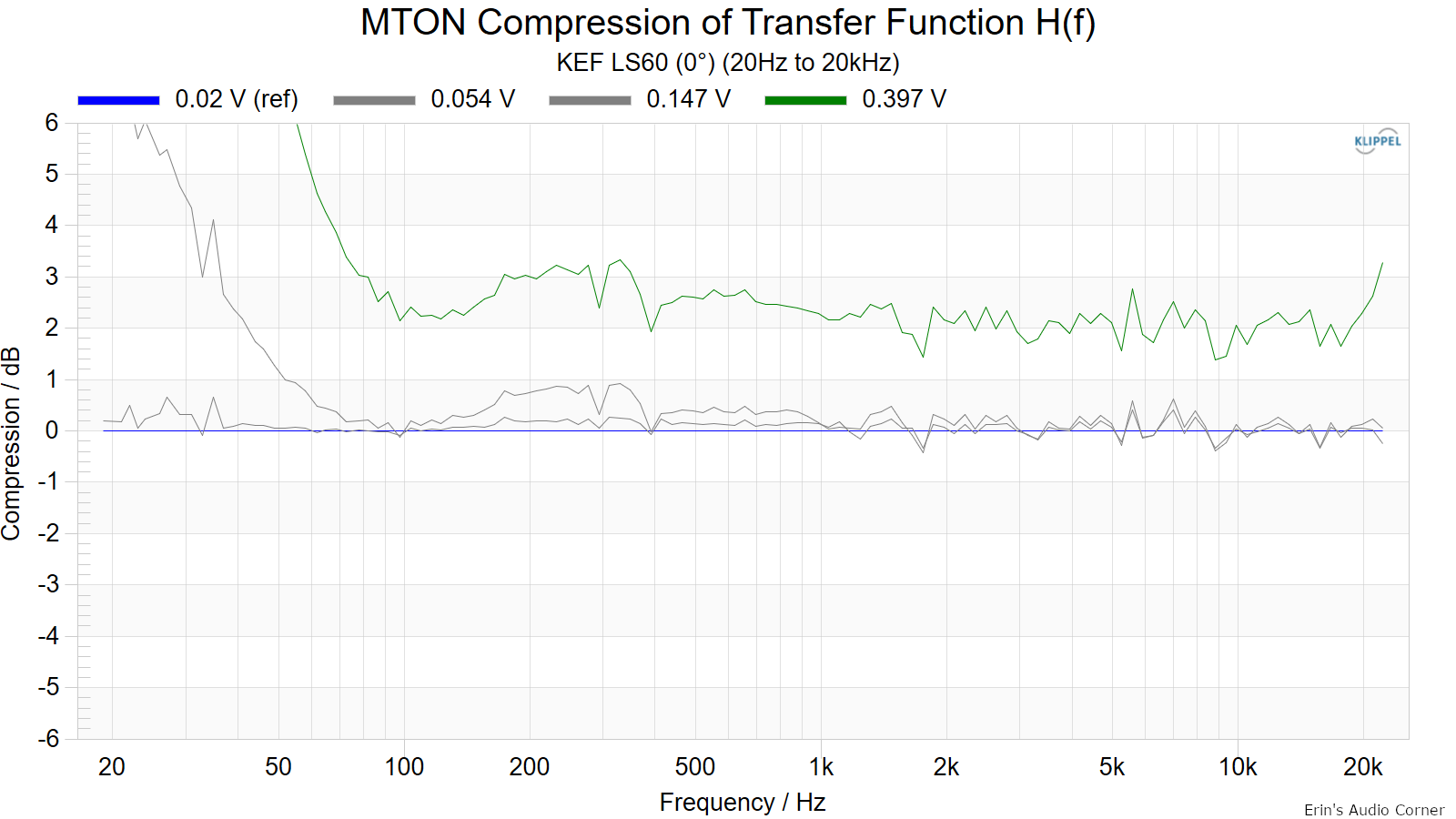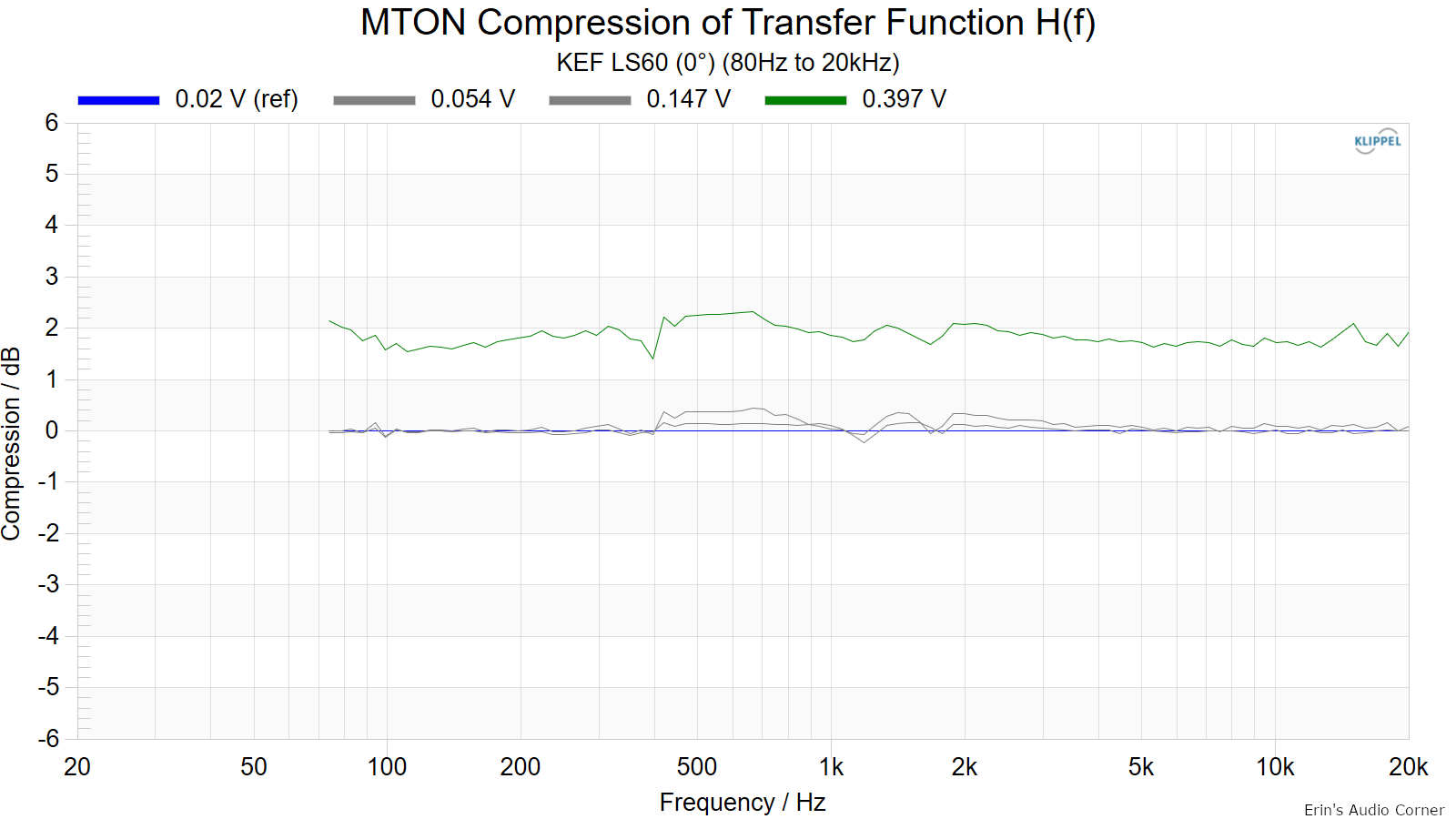Did some REW testing to get an idea of when limiting kicks in and how it impacts the frequency response in my room with my LS60/HSU subs combo. I'm running the LS60's 25 inches off the front wall.HSU ULS 15MK2 subs are behind and to teach side of the speakers backed into the corners (GIK double stacked TriTraps) They are spaced 8.6 ft and 8y.2 ft from my ears (measuring position). Room is 14.3 x 16.6 x 8 ft. Speakers are along the 14.3 ft width. KEF App settings: Wall Mode - Off Treble - 0;; Phase - On; Extension - Extra;; Balance - Center; Sub Out - Two (obviously) and Stereo;; Hi Pass - 100Hz (tried some at 120Hz); Low Pass - 135Hz (have run at 100Hz too green trace is 100/100); Sub Gain - 0dB
Room is treated with ceiling mounted GIK 244's, Double stacked TriTraps front corners. One TriTrap back upper left corner another currently standing on the floor butted up to an Ikea cube stack left side 2/3 back. Front side walls have SlatFusors and back right side corner a couple more 24x24's. Back wall has a 5x5 IKEA cube shelving unit 70% full of LP's with two 12x48 Monster Bass Traps mounted at rear wall ceiling interface above the shelving and two 12x48 Monsters with Scatter Plates vertical next to the sides of the back Ikea shelving.
View attachment 338098
Measurements
It's obvious the limiter is kicking in somewhere between the 90-93dB individual speaker test level. Cutting back the tweeter level. The waterfalls show it very clearly too.
View attachment 338100
Waterfalls
View attachment 338105
View attachment 338106
View attachment 338107
View attachment 338110
I'm very much a neophyte running and interpreting REW but the I think the FR isn't too bad excluding the room mode dip in the 100-126Hz range and lower hump. I may play some more and try dropping the Hi Pass to 80Hz see if it fills in some of the dip at all. Hopefully no limiting too.
The limiting is clearly apparent, less so listening to my untrained ear, but comes across as a softening of the top end sorry for my lack of techie terminology. I'm concerned a little that when I finally tackle running Dirac on this system the headroom used up may limit the volume more than acceptable for me during boisterous sessions.




